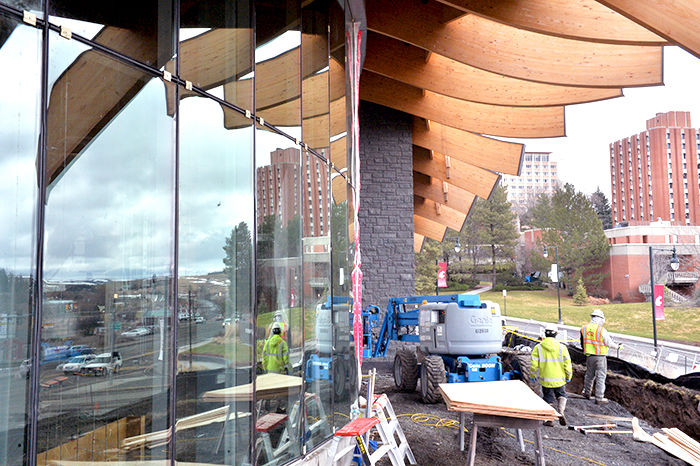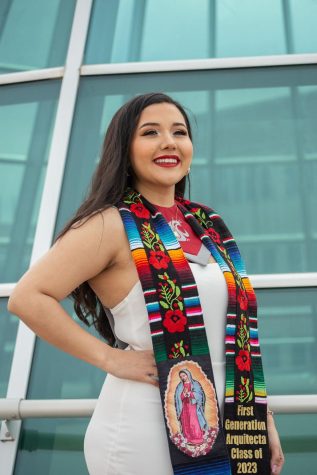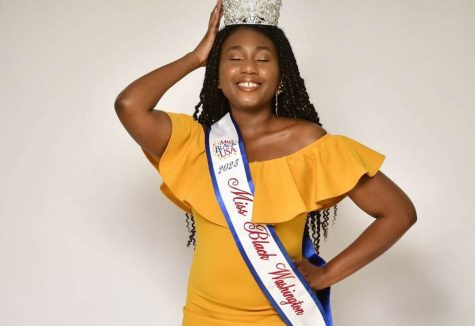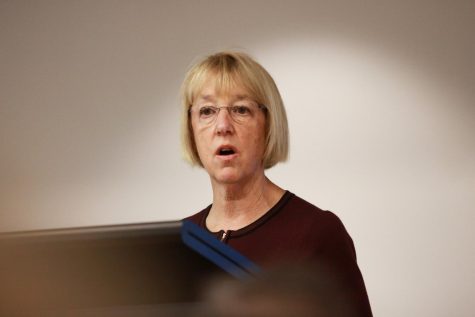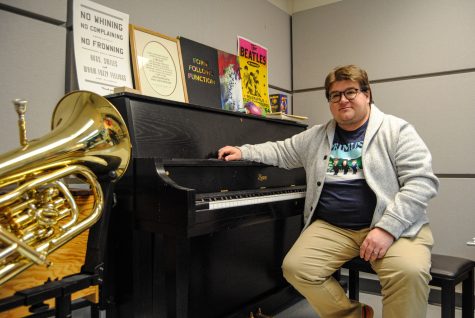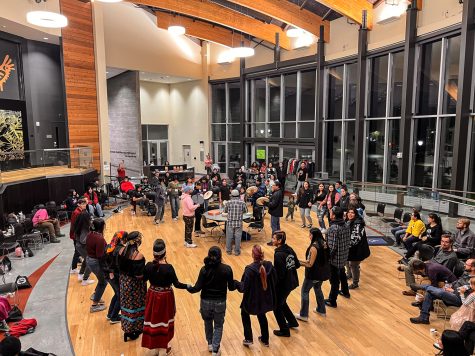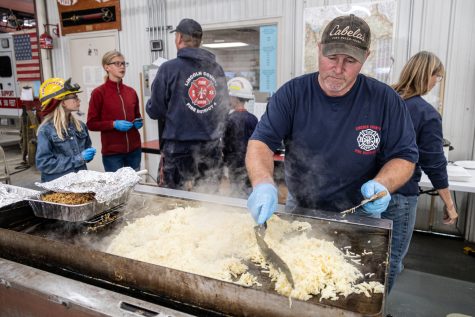‘An area of inclusion’
February 27, 2017
The Elson S. Floyd Cultural Center is set to open on the first day of fall semester, after more than two years and $16 million of design and construction.
The Cultural Center was a vision of late WSU President Elson S. Floyd’s, said Maria de Jesus Dixon, manager of operations. It bears his name to show respect to that vision. The cultural center is the second WSU structure to be named after Floyd, making him the third president with more than one university namesake.
{{tncms-asset app=”editorial” id=”a92ec734-fcbf-11e6-8f25-8f4d03ea60c8″}}
Kelly Keane, project officer of Facilities and Services Capital, said among the 10 architecture firms which showed interest in designing the center, GGLO Design, a Seattle-based firm, was chosen to bring Floyd’s 16,000 square-foot vision to life.
“It’s getting exciting now that it’s taking shape and we can see what it looks like,” Keane said.
Paula Groves Price, head of the programming committee and associate dean for diversity and international programs, said GGLO’s design stood out among the others. The firm’s decision-making was purposeful, such as their design for the roof made to reflect the environment around it, Groves Price said.
The center will also showcase the history of the Nez Perce tribe, as WSU is built on their land.
“The architects were really great at working with Nez Perce tribal members, in terms of the culture department in particular,” she said. “We also have an artist who is a Nez Perce tribal member who worked on one of the knowledge room doors.
Tribal members even blessed the land at the ground-breaking ceremony, Groves Price said.
GGLO project manager Don Caffrey said the building design and construction took a lot of direction from Nez Perce and other local natives.
Caffrey said they made sure they were responsible stewards of the land, including in the landscape design. They will re-plant some areas with native ponderosa pine and other Palouse prairie plants, as well as traditional plants used for smudging, a ceremony by which some Native American tribes cleanse the area.
“We tried to listen to and learn from how the Nez Perce and other native peoples lived on the land, and think of that as we designed the building, as opposed to appropriating imagery,” he said.
Groves Price said she thinks this building has the opportunity to be a different space for WSU.
“We now have an additional space to be used for community outreach, events, educational purposes, different ways to connect the WSU community with diversity programming,” she said.
The center will host a number of different diversity programs and events that currently don’t have a space, but there will also be signature events and programs specific to the center, said Groves Price.
“It’s a celebration of diversity,” Dixon said, “and the programming committee will make sure the educational purpose doesn’t get lost.”
The future occupants of the new building have yet to be determined, Groves Price said. Dixon said a programming committee under the Provost’s Office will prioritize the different types of programming that will take place in the center.
The programming team has several different plans for the space as of now, Groves Price said.
{{tncms-asset app=”editorial” id=”c81fe772-fcbf-11e6-b577-9310c2fc370e”}}
“There are a lot of educational components that are built into the building itself,” she said. “Particularly around Nez Perce history and culture, as well as the history and culture of a lot of our ethnic groups on campus.”
Diversity educators will hold competency trainings and various other related events in the new building, Groves Price said.
“It’s something we hope people would use all the time,” she said. “[We] envision that there will be students groups that will have some of their meetings in some of the knowledge rooms, for example.”
There will also be two kitchens inside the center, a commercial kitchen and a training kitchen, which the programming committee envisions will be used for demonstrations in the future, Groves Price said. There will be monitors above the training kitchen for people watching the demonstrations to get a closer look, she said.
“We’re really, really excited about the kitchen area,” Groves Price said, “because food is also a really important piece when it comes to having cultural celebration.”
Along with the kitchens inside the center, there will be fire pits outside that will allow for a demonstration of traditional native cooking, she said.
“We wanted to make sure we had the capacity to hold educational programming but that if there were events about cultural celebration, we’d be able to cook cultural foods or bring them in,” Groves Price said.
Certain feasts, particularly among the Nez Perce tribe, involve cooking a traditional fish in the fire pits, she said. They anticipate members of the nearby tribal communities will want to come cook some of their traditional feasts and share their culture with the rest of WSU, Groves Price said.
On the outside plaza, there is also space to put teepees up, Groves Price said, which will allow for more traditional feasts and pow-wow dances during certain times of the year.
J. Manuel Acevedo, director of multicultural student services, said MSS has been engaged in the process of creating the center, and is hoping to host some of its events and trainings there.
“For example, I’m hoping we’ll do La Bien Venida over there,” he said. La Bien Venida is an orientation session for Spanish-speaking parents of incoming students.
He also said he hopes the student groups can have access to the space year-round, for sponsoring the different events they want to put on.
The center will be open to any and all students who wish to use it, Keane said, but rather than focusing generally on different cultures, it is focused around the four traditionally underrepresented groups in Washington: African Americans, Asian Americans and pacific islanders, Native Americans, and Latinos.
“The building is about our history, and this university and its past,” Keane said.
Sebatian Kalilikane, project engineer intern and senior construction management major, said he is excited about the inclusive nature of this building and how it will add to WSU.
“I think just being able to have a building like this that promotes something that I don’t see other universities having,” Kalilikane said. “Which is an area of inclusion.”
Editor’s note: This article has been revised to reflect the correct spelling of Sebatian Kalilikane’s name. An earlier version of this article spelled his name as Sebastian.
Editor’s note: This article has been revised to reflect that a programming committee will prioritize, not determine, the different types of programming that will take place in the center.


